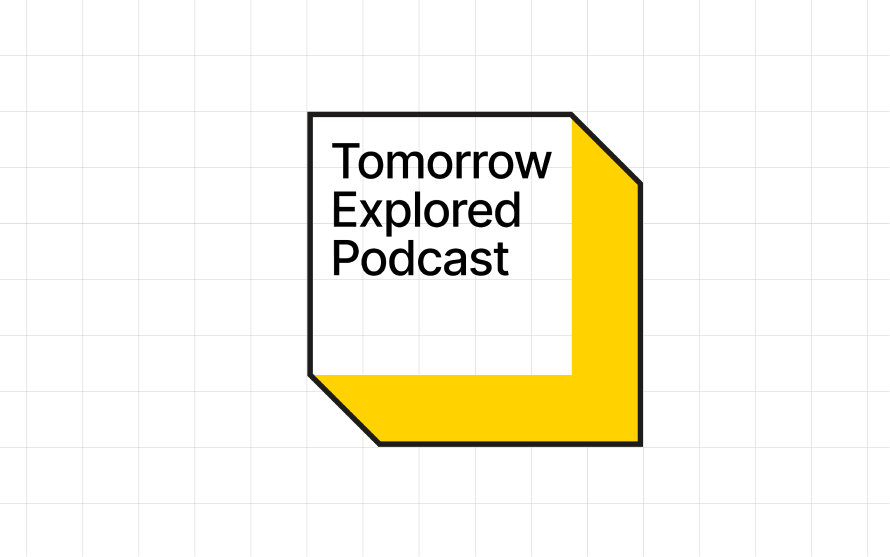Sangre: Design approach to engineering data economies

2020-03-31
In this podcast we discuss our new collaboration with Sangre Oy, a Finnish design company that will be working with TX on Engineering Data Economies.
You can also find this episode on Apple Podcasts and Spotify.
Key points with Sangre
- The Partnership between TX and Sangre Oy
The central theme of the podcast was the recently formed partnership between TX and Sangre Oy. Ben Sheppard shed light on the reason behind this collaboration, mentioning that they saw immense potential in merging their services, especially around the concept of engineering data economies. He noted, “We did this because we saw a lot of opportunities to bring together our service offerings, particularly around engineering data economies.” - Sangre Oy’s Unique Approach
Mikael took listeners on a journey through Sangre Oy’s distinctive approach to design. The company’s ethos is firmly rooted in user-centered design. Their methodology ensures the end-users are involved in projects from the early stages, leading to more efficient and user-friendly outcomes.
Mikael emphasized their philosophy, stating, “What we tried to do is try to find the best solutions for our clients without compromising the human factors.” Their iterative design process is notable, with a focus on validating prototypes with end-users at early stages. This approach ensures that solutions are aligned with user needs and preferences. As Mikael put it, “You just want to do is to fail fast, not 80%, when you’ve been doing 80% of the project, you rather fail at that 5%. So, it’s less costly.” - The Intricacies of Engineering Data Economies
Mikael expressed enthusiasm about the vast potential that lies in combining Sangre Oy’s design expertise with TX and Streamr’s proficiency in data economies and decentralized business models. He highlighted the timeliness of the data economy, especially considering the impact of the Corona crisis.
Data’s value has become undeniable, raising pertinent questions about its ownership, monetization, privacy, ethics, and much more. Mikael passionately remarked, “The data economy is timelier than ever now, like, only in the Corona crisis, we can see the value of data really well now.” - The “Hack the Crisis” Event
Jarno Marttila shared their recent experience at the “Hack the Crisis” hackathon held in Finland. The teams from TX, Streamr, and Sangre Oy collaborated on this initiative, aiming to develop innovative solutions for the challenges that have emerged due to the COVID-19 pandemic. They ultimately decided to create a chatbot that would efficiently gather data on the symptomatic situation among the Finnish population. Although they didn’t secure a win, the experience was invaluable. - Collaboration Experience with Sangre Oy
The collaboration with Sangre Oy during the hackathon provided an opportunity for the teams to work closely and understand each other’s methodologies better. It was a fusion of ad hoc and lean methodologies, characterized by regular check-ins and iterative cycles. Ben Sheppard also hinted at potential future collaborations, especially in the health and pharmaceutical sectors, though details were kept under wraps due to the confidential nature of the bidding process.
The future landscape of the partnership between TX and Sangre Oy is poised to be transformative, blending Sangre Oy’s user-centered design ethos with TX’s expertise in engineering data economies. As data continues to play an increasingly pivotal role in modern business and societal contexts, this collaboration aims to explore innovative solutions that prioritize end-user involvement and iterative design processes. With exciting potential projects on the horizon, especially in the health and pharmaceutical sectors, the partnership is set to redefine the way businesses harness the power of data, ensuring its ethical, efficient, and user-focused utilization.
Transcript
Ben Sheppard 00:00
Hi, everyone. Ben Sheppard here from TX. I’m your host for this month’s TX podcast. We’ve got a special guest in today who’s Mikael Koskimaa, the CEO of Sangre Oy, which is a design and service design company here in Finland and I’ve also got my co-host, Jarno Marttila, so I’m gonna let them introduce themselves, and then we’ll get into the topics for today.
Jarno Marttila 00:28
All right. Hi, all so I’m Jarno Marttila. I’m your cohost for this podcast and yeah, I’ll pass it to Mikael.
Mikael Koskimaa 00:37
Yeah, thanks for having me, guys. So, my name is Mikael Koskimaa, and I’m the CEO of Sangre Oy.
Ben Sheppard 00:47
Great. Okay, so the reason we’ve got Mikael on the podcast today is because we recently decided to form a partnership with Sangre Oy as our sort of design and service design partner for projects that TX and the wider stream a group of companies will be working on all across the world. We did this because we saw a lot of opportunities to bring together our service offerings, particularly around engineering data economies. So, we thought it might be good today to actually talk about that in a bit more detail. Talk about some of the services that Mikael’s company has been offering, and then really laser in on what is it that we believe we can do jointly together? What have we already been doing together in a recent hackathon event? What sort of things can we look forward to in the future? So, this is as you can tell a bit of casual talk in sort of podcasts that’s going to be pretty relaxed. We’re all doing it from our homes. So, there might be some funny noises at times, but please bear with us because that’s the nature of being quarantined, isn’t it? [Inaudible 01:57]. Okay, great. So, Sangre Oy. What can you tell us about Sangre Oy, Mikael? Can you give us a bit of an intro about your company, what you’ve been doing, how long you’ve been around?
Mikael Koskimaa 02:16
Sangre Oy, in this form, has been around five years and currently, we are located in bedrooms and living rooms and home offices across the world. We do have offices as well in Helsinki and Warszawa. We are basically a data thought consulting agency with the soft spot for human beings. So, we are design oriented and user centered agency. What we tried to do is try to find the best solutions for our clients without compromising the human factors. So, this means we have a strong design team. I think that’s our sweet spot really, how the user centered design is aligned with the tech and what comes out that’s the digital products.
Jarno Marttila 03:31
Yeah, that’s really interesting. Like, probably some of the audience who are listening to this, don’t know what it’s like user oriented or centered design, like, how would you open up like sloping? What does it mean? Like if we can, let’s say from engineering background?
Mikael Koskimaa 03:46
Yeah, well, I think it basically means that at least for us, it means that the process is user centered that means that we try to involve the end user to the project as fast as possible. That means that if we are designing a product or service that usually goes around many iterations of design, for example, there might be prototypes at early stages of the project, and we tried to validate the product types already with the end users. So, that means there might be a reference group that is going to test designs or prototypes. So, that’s basically bringing the end user already to the project as early as possible.
Ben Sheppard 04:52
So, you’re building up the solution with them. It’s a real customer in mind rather than trying to second guess everything that needs to be done and then sort of pitching something in front of them, when you’re already 50 or 70% of the way through the project, and then turning around to you and saying, yeah, this isn’t really what, what we want. Instead, you bring them in from the beginning and build that solution out with them.
Mikael Koskimaa 05:15
Yeah, that’s basically how it is. So, what you just want to do is to fail fast, not 80%, when you’ve been doing 80% of the project, you rather fail at that, 5%. So, it’s less costly.
Ben Sheppard 05:32
Yeah, that must save clients quite a bit of money, rarely, because I’m sure there’s plenty of projects that they go on for a long time before the client even realizes that it’s going wrong, and then still has to pay for that time and then yeah, more money to actually fix the thing and turn it round. So, it sounds like it’s a much better approach for everyone.
Mikael Koskimaa 05:53
Yeah, it is. Of course, it’s a bit like, for some clients, they want to say like, the specifications need to be really cut in stone. Sometimes it is harder to sell the project when you say that, okay, we have a bar chat. Then we tried to get there. We don’t know where we’re getting, but it’s going to be better than making, like, specifications beforehand.
Jarno Marttila 06:29
I’m sorry. I mean, it sounds like, goes well, with this lean type of thinking in business models that you basically have a time frame, and then you try to iterate as many cycles as possible, but yeah, I can only imagine that it also takes like, specific kind of mindset from the customer, then, okay. You have to trust the process; the process will get you through.
Mikael Koskimaa 06:54
Yeah, that’s it. It’s basically in process. Nothing that we’ve been inventing, it’s just the way we want to work, and for customers. Yeah, it’s harder to sell at first, but then when they start to see the benefits, they usually want to continue like that, because it also kind of starts to be easier in the long run for the customers as well, because it’s really painful to try to make a specification, and so far, I haven’t seen 100% specification, they always lack something. So, it’s good to have room for change and error.
Jarno Marttila 07:42
That’s true. Great.
Ben Sheppard 07:44
So, you’re obviously aware of the work that Streamr and TX is involved with Mikael around engineering data economies?
Mikael Koskimaa 07:55
Sure.
Ben Sheppard 07:55
What is it that excites you about that particular topic and why did you sort of agree to be in this partnership with us? Was there something in particular about engineering data economies that you thought, yeah, this sounds interesting and, you know, I can see a place where we can add a lot of value to this?
Mikael Koskimaa 08:14
Yeah, that’s an excellent question. I think there’s many, many sides to it. One is, of course, the business opportunity that I see in it, I can see that combining the strengths of TX and Streamr and Sangre Oy is something special. Combining the design skills that we have with your skills about data economies, and decentralized business models, I think it’s fascinating. Then if you’re not directly talking about business, I think the data economy is our timelier than ever now, like, only in the Corona crisis, we can see the value of data really well now. I mean, how the low case and then Democratics and the health data played a huge role in the Corona crisis. It starts to be really beautiful, like the value of data. So, I think that’s this for me plays a big role, how the data, like on the societal level, what kind of role it is in. There’s questions like who owns the data, who can access it, who can make money out of it? Those are huge questions, privacy, ethics, control of the data, regulations, and good and bad governments. I mean, it’s a huge topic.
Jarno Marttila 10:07
Yeah. I’m wondering if this terminology is new for some more listening this podcast, but how do you Mikael seeing, like, why would you include or how would you explain like, what is intimidator economics from your perspective? How do you see it like, what kind of activities does it cover or what kind of services can you offer towards it?
Mikael Koskimaa 10:35
Well, I think, of course, we know the big players, Google, and Facebook and how they are using the data and monetizing it. I definitely say that as a part of it. Then we have like IOT stuff that is collecting data all the time and then algorithms AI, that is like, taking it to the next level. So, I see this whole thing as part of data economy.
Ben Sheppard 11:17
Just listening to what you were saying earlier about the way you structure your sort of service design process, when thinking about something like engineering data economies, where it’s a pretty new topic, and surprises aren’t that familiar with how much sort of value their data has got. Maybe they don’t even see data as an asset, yeah. Although perhaps that will change now, because of the sort of situation we’re in globally and needing to create new business models from things and already existing in the business, but I guess, in helping these clients understand what our engineering data economy is, why is this important to me that sort of design thinking process that you set out earlier becomes very relative, doesn’t it, because how can they define a scope for something they don’t understand, they can? So, this sort of iterative process that you talked about earlier sounds really relevant in those instances, Mikael?
Mikael Koskimaa 12:20
Yeah, definitely. I think only doing like, digital strategy, without data economy emphasize it’s difficult enough. If you think about like, average company and their branches, usually like IT, sees that it off to other chests, cloud computing and API’s and then for marketing, it might be like, web service, or web channels and Coronavirus, and then maybe for financial management, it might be data analytics, and then R&D focuses on the new products. So, bringing it all together, usually needs a good digital strategy, and then adding this data economy is there. It’s a big question, and I think the design process can be like, some specs that we’re doing beforehand, and then start doing something based on that specification. It really needs to be an iterative process and there’s a lot of questions that needs to be asked and it really comes down to the basic questions. When defining our digital strategies, like who are we building the product for? What is the segment? How do we deliver value to the users? What resources do we have? How much does it cost? Where’s the money coming from? These are basically the basic questions that need to be asked when working with digital strategy. I think those are the same questions that need to be asked when engineering and data economies as well. Then I think there’s like, extra emphasizes on when building the data economy is like reaching the trust of the end users. What mechanisms we can use to raise the trust? So, there’s a lot of like big questions and you can hit if you need more than one workshop to really answer those.
Jarno Marttila 15:14
It also sounds like there’s a lot of room for like this newest discovery process that you’re actually kind of researching the topic and understanding, what’s the bleeding edge done not research side, like is this kind of information usable and maybe replicable, like, from theory to practice? It’s really interesting for me, because like, now let’s just build something. Design and build something really good, but let’s take the newest nuances like what the reasons commodity has done and applied here, if possible.
Mikael Koskimaa 15:49
Yeah. That’s true.
Ben Sheppard 15:54
I think it’s really fascinating. Because, as you know, Jarno, you’ve been working side by side with me in the Streamr partnerships team and now in TX and I guess we kind of did things in reverse, didn’t we, we built some technology first, that enables the engineering data economies. Then we set up TX a firm that offers sort of development consulting services around that technology stack, where we build these new applications that sort of capture and disseminate and monetize that data by linking into Streamr, but the sort of component that was missing was that first part where you actually take the client along the journey will take the enterprise along the journey. So, we’re already at the water park and the clients are still back in the hotel. Now I think we’ve Sangre Oy what we see is we’ve got that thread of all three companies coming together to take people along the journey with us, [Inaudible16:52].
Mikael Koskimaa 16:54
Yeah, I think that’s how it is, sometimes you have to build the infrastructure first. As you need to have the road before you can have cars there. So, in a sense, it’s new still that I think it had to be built bottom-up kind of at this stage. So, yeah, but now I’d love to see the need for the design there, because there’s gonna be more and more end user apps and stuff built on top of this infrastructure. So, that really is the time to have the user centered view in this whole theme.
Jarno Marttila 17:44
you know, I’m being collaborative brought it up, Mikael, I think we should have a whole another podcast going through like, what have you learned? How to sell stuff, how to build up? If we do like all over again, like, how should we do it, from that perspective, would be really beneficial?
Ben Sheppard 18:07
I think you’re right, though Mikael, there’s definitely a growing amount of demand for these sorts of applications that now realize the value of data. We’ve seen that in the Kraken projects, which is the pharmaceuticals and health projects we’re doing with Atos, and Lin care, and several other companies, where we take that patient data and look at how can patient data, improve the usage of different drugs between hospitals and pharmaceuticals and where are those drugs not working? You know, how can that sort of knowledge be utilized better in future. Then in the TRACY projects, we’re incentivizing fisherfolk to share verified fisheries data. So, these sort of data economies pop up all over the place that people probably wouldn’t think of, but they actually exist, because data in itself has got a lot of value and it’s just helping people to understand why that data has value and how it can be unlocked, isn’t it?
Mikael Koskimaa 19:26
Yeah, that’s how it is basically and how to like others really proving it to the end users that they can see it in their daily lives. That’s how it’s going to change when we actually see the value of data in different forums.
Ben Sheppard 19:50
So, moving on to the last bit of our sort of agenda for this podcast then, because we’re on the 20-minute mark. Jarno, can you tell us about the latest collaboration that TX, Streamr and Sangre Oy, have had at the hack the crisis event in Finland. What was it you guys were all doing together?
Jarno Marttila 20:11
Sure. So, yeah, last weekend, we had a little bit of a get together. We participated this hectic crisis hackathon held online in Finland. It was quite an interesting event in itself. So, we made a team of like, people coming from different, like partner companies. Based in the point of the Hackathon was, as you could imagine, trying to find solutions to different kinds of problems that arise from this Coronavirus situation. One of them was basically the topic of saving lives. So, we thought like, well, what could we kind of pitch in here. Of course, the hackathon itself was, interestingly, also put together as it’s not my first target, or like I’ve been to quite a few, and they’re all different, but this one was a bit more special, because there was no kind of limitations at all, no theme size limitations. They were only interested in the hackathon, like, if the solution is scalable, if it can be implemented fast, and the best thing to use.
So, that’s something that was the kind of number one decision criteria after winners in the end. So, we thought about like, well, let’s just sit down all together and use some lean methods, ideas on possible topics for it. We played quite a few of them, and then with the one we decided to hack around was basically a chatbot. The idea behind the theory was that it would be nice if you could somehow scope quickly, from the population on that, one is there a symptomatic situation? What kind of symptoms do you have as a person, and kind of coincidentally, around the same time, there was a tweet, from DHL, which is Ministry of Health, something in Finnish. They were basically asking like, oh, if you could always call out somehow. What kind of symptoms do the people have? Do they have like the respiratory symptoms, so they could somehow model it also, into this figure, some estimations of how it’s declaring a crisis progressively in Finland. We were like, great, well, this is a good reference, and kind of backs up the idea. So, let’s create a chat bot around it. So, we did that. We started basically from zero, then, in 48 hours, we had a really rough working prototype that would ask you the questions and answer them, like, let’s say Jeff would ask you that, what’s your age? Where roughly you live in what’s it called and having a hat, like, have you been exposed to these areas that are heavily infected or do you have any kind of respiratory illnesses or symptoms? That’s what they based them on in the end. So, we need one, unfortunately, but it was a good experience. Mikael, it was really nice way to get to know like a bit deeper, your colleagues or future colleagues’ kind of like, do something together outside just the normal kind of business related, a horn that you usually do every day?
Ben Sheppard 24:05
Yeah, a good way to sort of try this way of working as well with Sangre Oy, I guess they’re sort of different.
Jarno Marttila 24:14
Yeah. We had [Inaudible 24:19], from Sangre Oy, on he is UXUI lead out there. Yeah, he’s really good.
Mikael Koskimaa 24:26
Yeah, he was happy to join. I talked a bit with him, and he said it’d be the best good experience to do that. I wonder how was your process in a hackathon, with the designer? They’re really ad hoc…
Jarno Marttila 24:49
It’s something between like ad hoc and mean yes, we were kind of aware of the beginning that sure, 48 hours to hack something we’re not gonna do it by [Inaudible 25:00], coding. We’re too old for that. So, who wants to work out the days and see what we come up with me to stay on designing and then we implemented like, each of our own part or getting implement, had like, numerous kinds of catch-up meetings, like, every couple of hours. I’m going to be iterated like, maybe four or five cycles. I mean, at the end, like, it’s good enough, my prototype to explain the concept. Well, usually hackathons are like, it’s not that much about like, how much get done. It’s like what you can pitch and what you can kind of show and tell.
Ben Sheppard 25:35
Yeah. Great and I know from speaking to Rob Holmes, who sort of heads up most of our major bids, that there’s a few health and pharmaceutical projects that we’re now looking at how we can collaborate together with Sangre Oy, TX and Streamr. There’s a few interesting proposals he’s working on at the moment, which I can’t go into detail because we’re bidding and that’s the nature of bidding was bid confidential, but it’ll be exciting to see what comes up in Q3, Q4, this year, off the back of those bids and if we can collaborate on some major schemes in Europe, within those verticals. So, great. So, thank you very much for coming along, today Mikael and joining Jarno and I and our podcast. It’s been great having you here. I hope you’ve enjoyed it.
Mikael Koskimaa 26:32
Thank you. Yeah, it was great, great chatting, it went fast.
Ben Sheppard 26:42
Great. Okay, that’s all for today. Thanks very much for listening. Those of you that downloaded the podcast and yeah, we’ll be in touch again soon with our next podcast. Thanks very much.
Jarno Marttila 26:56
Yep. Thank you.
Related posts

Decentralised data transportation – Streamr Network
We talk to Henri Pihkala, CEO of Streamr about the benefits of decentralised data systems, data crowd-sourcing and crowdselling, and fairer data value chains.

Engineering Solutions for the Future Data Economy in Healthcare
The growth of the medical IoT market and the accelerating drive for personalised health has led to a boom in wearable devices and growing amount of health data.
Drop us a message to discuss your project
We’ll get back to you as soon as possible.
Find out more
For information on how we can transform your sector or business, please schedule a meeting or get in touch using the contact details below.



